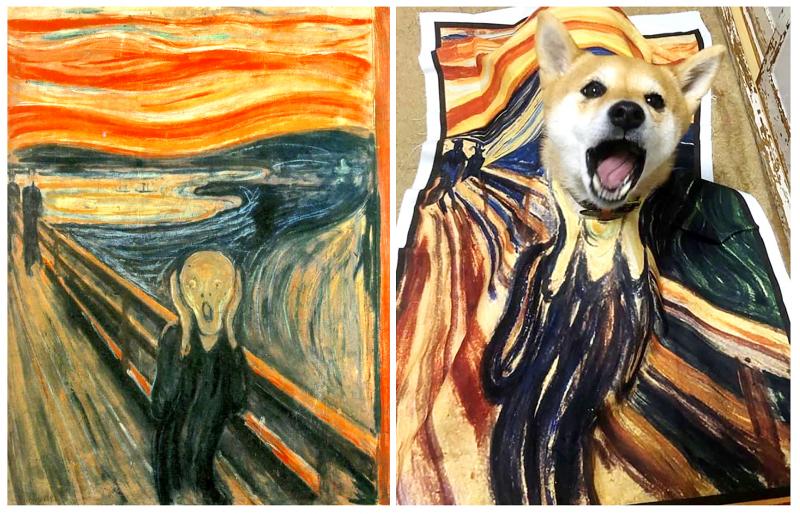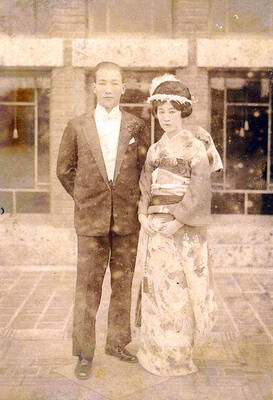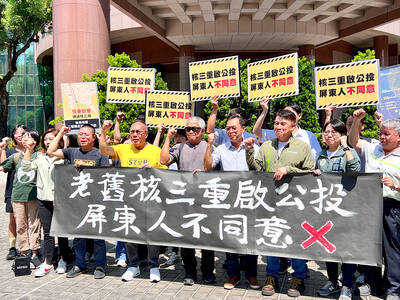It is a masterpiece that seems to speak to the later horrors of war in the 20th century and even the anguishes of the 21st. Now Edvard Munch’s The Scream has another claim on modernity, after it emerged that an oversight by the artist means the 1910 version of the work needs to practice some physical distancing.
An international consortium of scientists seeking to identify the main cause of deterioration of the paint in the canvas has discovered Munch accidentally used an impure tube of cadmium yellow which can fade and flake even in relatively low humidity, including when breathed upon by crowds of art lovers.
The result is that Munch’s initially bright yellow brushstrokes have turned to an off-white color in the painting’s sunset and in the neck area of the central angst-ridden figure.

Photo: AP
The thickly applied opaque yellow paint in the lake above the figure is also flaking away from the canvas, which was famously stolen in 2004.
“It turned out that rather than use pure cadmium sulphide as he should have done, apparently he also used a dirty version, a not very clean version that contained chlorides,” said Koen Janssens from the University of Antwerp. “I don’t think it was an intentional use — I think he just bought a not very high level of paint. This is 1910 and at that point the chemical industry producing the chemical pigments is there but it doesn’t mean they have the quality control of today.”
Scientists from Belgium, Italy the US and Brazil took part in the investigation. They initially tested whether reducing the painting’s exposure to light may be key to protecting it from further deterioration.
“But it turned out that the light is not really very harmful so it doesn’t make sense to reduce light levels below the normal one,” Janssens said. “You have to start working with the relative humidity in the museum, or isolate the public from the painting, or painting from the public, let’s say, in a way that the public can appreciate it but they are not breathing on the surface of the painting.”
He added: “When people breathe they produce moisture and they exude chlorides so in general with paintings it is not too good to be close too much to the breath of all the passersby.”
The Munch Museum in Oslo is due to move to a new location by the city’s opera house this year and the researchers’ findings are to be incorporated in how the painting is displayed in future.
“They can make all kinds of decisions about how they are going to display and protect against whatever environmental conditions,” Janssens said. “And that is what they said. They will make arrangements to lower the relative humidity. The standard is 50 percent humidity and they are going to go a bit lower than that.”
The discovery of the painting’s fragility was made through luminescence imaging of the canvas to see where the paint was behaving differently, analysis of tiny fragments of paint in Munch’s brushstrokes and in an original tube of cadmium yellow he used.
“When you illuminate the painting with UV light what comes back is some kind of orange light in some locations, and there the paint is in not so good a condition, Janssens said. “We tried to figure out why. This orange luminescence seemed to be associated to degradation.”
In early 20th-century paint production, cadmium sulphide was produced at times through a reaction between cadmium chloride and sodium sulfide.
One theory is that chloride-containing compounds, such as cadmium chloride and cadmium hydroxychloride, may have been left behind in the paint as a result of an incomplete or badly executed reaction.
Changing the circumstances in which the 1910 version of The Scream is displayed will slow down the degradation, it is hoped, but there is nothing that can be done for water damage clearly visible in its left hand corner.
Munch painted four versions of The Scream between 1893 and 1910. The 1910 painting was left with a dirty brown water mark when it was stolen along with his Madonna masterpiece by two masked gunmen in a daytime raid on Aug. 22, 2004.
The raiders had tackled four unarmed guards, ordered visitors to lie down and ripped the works off the wall before making their escape in a black Audi. The paintings were recovered in 2006 . Three men received jail sentences, two of whom were ordered to pay £6 million (US$7.3 million) in damages.

Sept. 1 to Sept. 7 In 1899, Kozaburo Hirai became the first documented Japanese to wed a Taiwanese under colonial rule. The soldier was partly motivated by the government’s policy of assimilating the Taiwanese population through intermarriage. While his friends and family disapproved and even mocked him, the marriage endured. By 1930, when his story appeared in Tales of Virtuous Deeds in Taiwan, Hirai had settled in his wife’s rural Changhua hometown, farming the land and integrating into local society. Similarly, Aiko Fujii, who married into the prominent Wufeng Lin Family (霧峰林家) in 1927, quickly learned Hoklo (commonly known as Taiwanese) and

The low voter turnout for the referendum on Aug. 23 shows that many Taiwanese are apathetic about nuclear energy, but there are long-term energy stakes involved that the public needs to grasp Taiwan faces an energy trilemma: soaring AI-driven demand, pressure to cut carbon and reliance on fragile fuel imports. But the nuclear referendum on Aug. 23 showed how little this registered with voters, many of whom neither see the long game nor grasp the stakes. Volunteer referendum worker Vivian Chen (陳薇安) put it bluntly: “I’ve seen many people asking what they’re voting for when they arrive to vote. They cast their vote without even doing any research.” Imagine Taiwanese voters invited to a poker table. The bet looked simple — yes or no — yet most never showed. More than two-thirds of those

In the run-up to the referendum on re-opening Pingtung County’s Ma-anshan Nuclear Power Plant last month, the media inundated us with explainers. A favorite factoid of the international media, endlessly recycled, was that Taiwan has no energy reserves for a blockade, thus necessitating re-opening the nuclear plants. As presented by the Chinese-language CommonWealth Magazine, it runs: “According to the US Department of Commerce International Trade Administration, 97.73 percent of Taiwan’s energy is imported, and estimates are that Taiwan has only 11 days of reserves available in the event of a blockade.” This factoid is not an outright lie — that

The People’s Republic of China (PRC) yesterday paraded its military hardware in an effort to impress its own population, intimidate its enemies and rewrite history. As always, this was paced by a blizzard of articles and commentaries in the media, a reminder that Beijing’s lies must be accompanied by a bodyguard of lies. A typical example is this piece by Zheng Wang (汪錚) of Seton Hall in the Diplomat. “In Taiwan, 2025 also marks 80 years since the island’s return to China at the end of the war — a historical milestone largely omitted in official commemorations.” The reason for its